Post by son-of-tiny on Mar 6, 2007 23:41:08 GMT
Battle of Cambrai
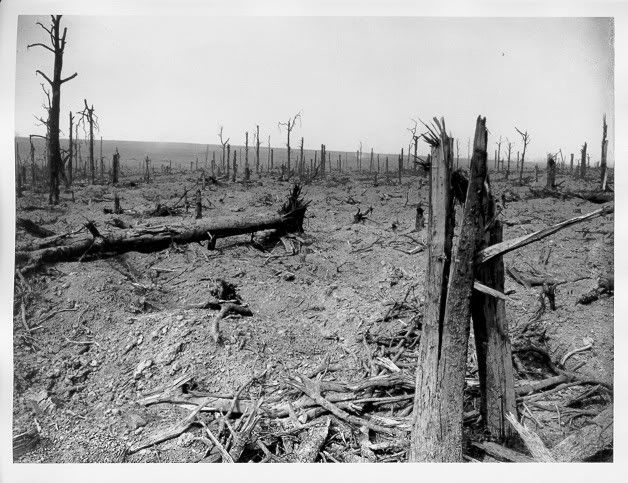
afew members are going to cambrai this 90th year I have updated thread put together some items of interest

www.villedecambrai.com/ French site
www.fortified-places.com/cambrai.html
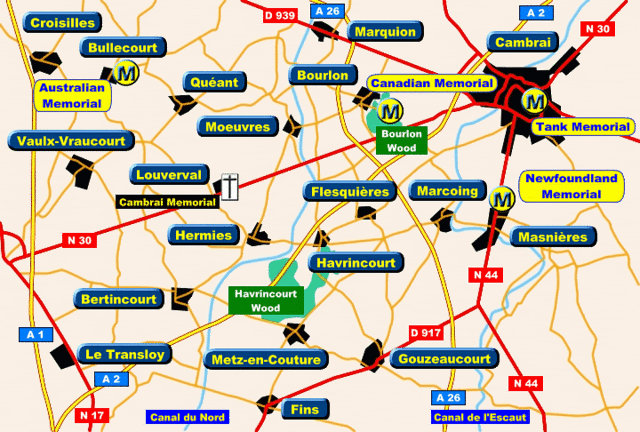
The Battle of Cambrai (November 20 - December 3, 1917) was a British campaign of World War I. Noted for the first successful use of tanks, the British attack demonstrated that the Hindenburg Line could be penetrated, while the German counter showed the value of new infantry tactics that would later be part of the Kaiserschlacht.
Cambrai is a French town in the Nord département (Nord-Pas-de-Calais). In 1917 it was a key supply point for the German Siegfried Stellung (part of the Hindenburg Line) and the nearby Bourlon Ridge would be an excellent gain from which to threaten the German rear to the north.
The plan
An attack on Cambrai using tanks was initially proposed by J.F.C. Fuller in June 1917 and almost simultaneously by Henry Hugh Tudor. Both plans were taken up by Julian Byng, Commander of the Third Army. Douglas Haig approved the plan as 'Operation GY' in September 1917, following another failure at Ypres. The Somme region was chosen for several reasons, one in particular for the tanks - the hope that the flatter, chalk terrain would be better for tanks than the deep clay slurry found by this time, on the Flanders Front.
The initial scope of the battle by Fuller as reported by Liddel Hart was for a raid "to destroy...demoralize and disorganize...and not to capture ground" taking eight to twelve hours with 6 battalions of tanks and at most two divisions of infantry or cavalry. Byng took the idea to Haig but the idea stalled initially with the focus on the battle at Ypres. By the time the focus shifted the raid had become a full-sized assault.
The plan was quite complex, but basically the German line would be broken by a concentrated attack across a narrow front (around five miles) between the Canal de Nord and St Quentin canal and then Cambrai would be encircled and Boulon Ridge captured. Certain newly developed tactics would be employed, including the use of air interdiction and mixed infantry and tank formations. Cavalry was also included in the plan, expanding through a 'cavalry gap' towards the River Sensée. The assault was assigned to the 19 divisionss of the British Third Army; of these no fewer than fourteen were still recovering from the slaughter at Third Ypres. Their commander, Byng, was much more optimistic of the potential success than Haig. The defending force was part of the German Second Army under General Georg von der Marwitz, designated Gruppe Caudry (or XIII Corps) it initially consisted of the 20th, 54th, 9th Reserve and 183rd divisions.
The divisions of the British III and IV Corps were to lead the attack. III Corps would attack in the south (right) between Crèvecoeur and Bonvais, with cavalry divisions waiting to exploit the bridgehead to be formed around Marcoing and Masnières. IV Corps was to advance in the north (left), capturing Havrincourt, Flesquières, Graincourt and Cantaing before allowing reserve and cavalry divisions to take Bourlon and the significant ridge. V Corp was assigned to follow up these successes to take the ground up to the River Sensée and secure crossings. The Tank Corps under Brigadier Hugh Elles (soon to be renamed the Royal Tank Regiment) provided its entire strength, over 350 fighting Mark IV tanks for the first day of the battle, 476 in all over the course of the battle. There were 216 tanks in the initial advance with 96 in reserve. Certain of the tanks were equipped with massive wood fascines to aid trench crossing or special 'grapnels' to aid wire removal. The first advances were mixed tank and infantry in 'Tank Battle Drill', with a leading tank echelon and then 50 yards back infantry platoons in two files, assigned as eight platoons per tank as either trench cleaners or trench 'stop'. Fourteen Royal Flying Corps squadrons were assigned to the battle, to provide trench strafing and to cover the noise of the tanks' advance.
The battle
The battle began at 0620 on 20 November. It opened with a carefully prepared and predicted but unregistered fire barrage by 1,003 guns on key German defences followed by smoke and a creeping barrage at 300 yards ahead to cover the first advances. Despite efforts to preserve secrecy, the German forces had received sufficient intelligence to be on moderate alert, an attack on Havrincourt was anticipated as was the use of tanks.
Initially there was considerable success in most areas, and it seemed as if a great victory was within reach; the Hindenburg Line had been successfully penetrated with advances of up to 8 km achieved. On the right, the 12th (Eastern) Division advanced as far as Lateau Wood before digging in as ordered; the 20th (Light) Division forced a way through La Vacquerie and then advanced to capture a key bridge across the St Quentin canal at Masnieres. The fate of the bridge is unclear. It was certainly destroyed but that was either by German demolition or by the weight of tanks attempting to pass over it. Whatever the cause it halted the hopes for advance there. In the centre the British captured Ribécourt and Marcoing, but when the cavalry passed through, late, they were dealt a sharp blow and fell back from Noyelles.
In the centre the 51st (Highland) Division was stalled at its first objective, Flesquières, and left the advances around it exposed. It is believed that the commander of the 51st, G.M. Harper, substituted his own tank drill for the standard one and that an excessive space between the tanks and the infantry contributed to the failure. Flesquières was also one of the strongest points in the German line and was flanked by other strong points.Its defenders under Major Krebs also acquitted themselves well against the tanks, engaging them aggressively. Almost forty tanks were knocked out by the Flesquières artillery, including sixteen by a single gun manned by a lone gunner. Despite this the Germans were forced to abandon Flesquières during the night. On the left the 62nd (2nd West Riding) Division swept all the way through Havrincourt and Graincourt to within reach of the woods on Bourlon Ridge and the 36th (Ulster) Division on their left reached the Bapaume-Cambrai road. Of the tanks 180 were out of action after the first day, although only 65 had been destroyed. Of the remainder 71 had suffered mechanical failure and 43 had been 'ditched'. The British had suffered around 4,000 casualties and had taken 4,200 prisoners, a casualty rate half that of Third Ypres (Passchendaele), and a greater advance in six hours than in three months there.
However the British had failed to reach the heights of Bourlon Ridge. The German command was quick to send up reinforcements overnight and was relieved that the British did not manage to fully exploit their early gains. When the battle was renewed on the 21st the pace of British advance was greatly slowed. The abandoned Flesquières and then Cantaing were captured in the very early morning but in general the British took to reinforcing their gains rather than expanding. The efforts of III Corps were officially halted and attention was turned to IV Corps.
The continuing effort was aimed at the ridge. Fighting was fierce around Bourlon and at Anneux, just before the woods, was very costly. German counters squeezed the British out of Moeuvres (21st) and Fontaine (22nd). Even when Anneux was taken the 62nd found themselves unable to even enter Bourlon Woods. The British were left exposed in a salient. Haig still wanted Bourlon Ridge and the exhausted 62nd Division was replaced by the 40th Division under John Ponsonby on the 23rd. Supported by almost a hundred tanks and 430 guns the 40th attacked into the woods of Bourlon Ridge on the morning of the 23rd. They made little progress. The Germans had put two divisions of Gruppe Arras on the ridge with another two in reserve, Gruppe Caudry was reinforced and to challenge the RFC the squadrons under the Red Baron were assigned. The British 40th did reach the crest of the ridge but were held there and suffered over 4,000 casualties for their efforts in three days.
More British troops were pushed in to move beyond the woods to Fointaine. But the British reserves were rapidly depleted and the Germans were still sending in more reinforcements. The final British effort was on the 27th by the 62nd Division aided by thirty tanks. Early success was soon reversed by a German counterattack. The British now held a salient roughly 11 km by 9.5 km with its front along the crest of the ridge. On the 28th the offensive was officially ended and the British troops were ordered to lay wire and dig in. The Germans were quick to concentrate their artillery on the new British positions. On the 28th over 16,000 rounds were fired into the wood.
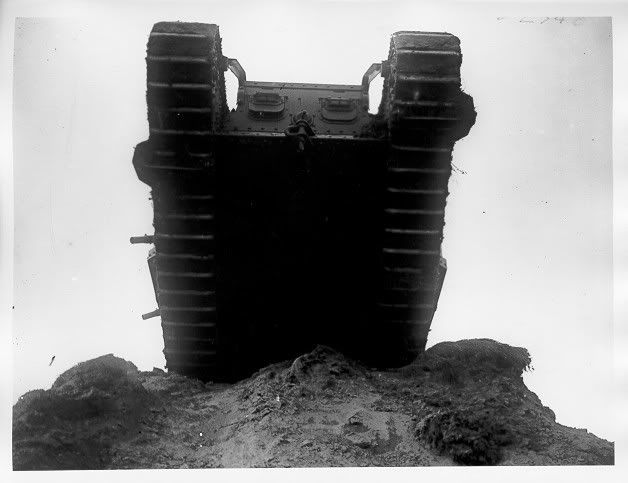
The counter-attack
As the British used up their strength to take the ridge the Germans were reinforcing the area more generally. As early as the 23rd the German command felt that a British breakthrough would not occur and began to consider a counter-offensive. 20 divisions were arrayed in the Cambrai area. The Germans intended to retake the Bourlon salient and also to attack around Havrincourt while diversionary attacks would hold IV Corps. Overall it was hoped to at least reach the old positions on the Hindenburg Line. The Germans intended to employ the new tactics of a short, intense period of shelling followed by a rapid assault using Hutier infiltration tactics, leading elements attacking in groups rather than waves and bypassing strong opposition. For the initial assault at Bourlon three divisions of Gruppe Arras under Otto von Moser were assigned.
The German attack began at 0700 on 30 November. Almost immediately the majority of III Corps divisions were heavily engaged. Gruppe Caudry attacked from Bantouzelle to Rumilly and aimed for Marcoing. Gruppe Busogny was targeted from Banteux. The initial speed of the German infantries advance was completely unexpected by the British. The commands of 29th and 12th divisions were almost captured, with Brigadier-General Vincent having to fight free from his own encircled headquarters and then grab men from any retreating units to try to halt the Germans. In the south the German advance spread across eight miles and came within a few miles of the vital village of Metz and its link to Bourlon. At Bourlon itself the men under Moser met with stiffer resistance. The British had assigned eight divisions worth of fire support to the ridge and the Germans suffered heavy casualties. Despite this the Germans closed and there was fierce fighting. British units displayed reckless determination - one group of eight British machine guns fired over 70,000 rounds in their efforts to stem the German advance around Bourlon.
The concentration of British effort to hold the ridge was impressive but allowed the German advance elsewhere greater opportunities. Only the fortunate arrival of British tanks and the fall of night allowed some form of line to be held. By the following day the impetus of the German advance was lost, but continued pressure on 3 December led to the German capture of La Vacquerie and the withdrawal of the British from the east of the St Quentin canal. The Germans had reached a line looping from the ridge at Quentin to near Marcoing. Their capture of Bonvais ridge made the British hold on Bourlon precarious.
Aftermath
On 3 December Haig ordered a retreat from the salient and by 7 December all the British gains were abandoned except for a portion of the Hindenburg line around Havrincourt, Ribécourt and Flesquières. The German had exchanged this territorial loss for a sweep of land to the south of Welsh ridge.
Total casualties for both sides were around 45,000 each with 11,000 Germans and 9,000 British taken prisoner. In terms of territory the Germans had recovered the early losses and a little more. Despite the outcome, the battle was seen as evidence than even the strongest trench defences could be overcome. The British had seen the advantage of tanks while the German command had seen the potential of new infantry tactics.
Cambrai
Cambrai (Dutch: Kamerijk) also written Cambray is a French town and commune, in the Nord département, of which it is a sous-préfecture.
Cambrai is the seat of an archdiocese whose jurisdiction was immense during the Middle Ages. The territory of the Bishopric of Cambrai, roughly coinciding with the historical Flanders, included large parts of the Low Countries. The bishopric had some limited secular power.
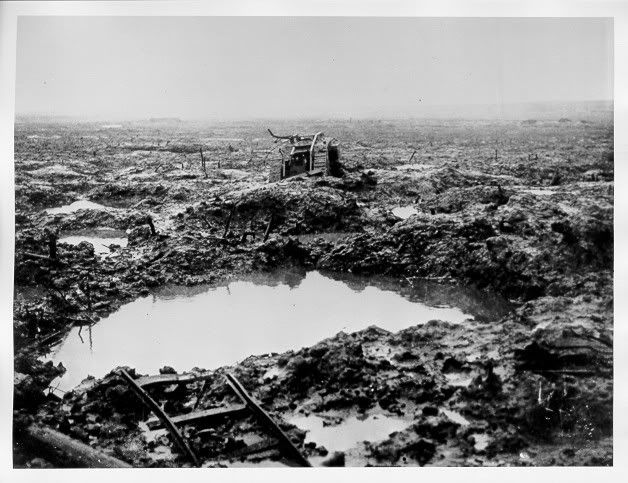
History
The Battle of Cambrai (November 20 - December 3, 1917), a campaign of World War I took place there. It was noted for the first successful use of tanks.
Music history
Cambrai has a distinguished musical history, particularly in the 15th century. The cathedral there, a musical center until the 17th century, had one of the most active musical establishments in the Low Countries; many composers of the Burgundian School either grew up and learned their craft there, or returned to teach. In 1428 Philippe de Luxembourg claimed that the cathedral was the finest in all of Christendom, for the fineness of its singing, its light, and the sweetness of its bells. Guillaume Dufay, the most famous European musician of the 15th century, studied at the cathedral from 1409 to 1412, and returned in 1439 after spending many years in Italy: other composers such as Johannes Tinctoris and Ockeghem went to Cambrai to study with him.
Cambrai cathedral had other famous composers in the later 15th century, including Nicolas Grenon, Alexander Agricola, and Jacob Obrecht. In the 16th century, Philippe de Monte, Johannes Lupi, and Jacobus Kerle all worked there.
As the economic center of northern Europe moved away from Bruges, the area became poorer, with an associated period of cultural decline. The cathedral was destroyed in 1796, but the archives were preserved (presently they are in the Archives Départmentales du Nord at Lille).
There was a pub L'homme armé in Cambrai, across the street from Dufay's residence.
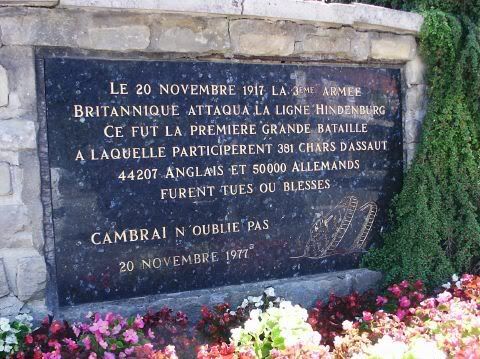
Births
Cambrai was the birthplace of:
Charles François Dumouriez (1739-1823), French general
Francisco de Carondelet (1747-1807), in Noyelles, Spanish governor of Louisiana, president of the Audiencia of Quito
Louis Blériot (1872-1936), aviator
Henri de Lubac (1896-1991), Jesuit and theologian
Julien Torma (1902-1933), writer, playwright and poet
René Dumont (1904-2001), engineer in agronomy, sociologist, and environmental politician
Maurice Godelier (born 1934), social anthropologist, neo-Marxist, and French intellectual
Twin towns
Cambrai is twinned with:
Houma - Louisiana, United States
Châteauguay - Québec, Canada
Kamp-Lintfort - Germany
Esztergom - Hungary
Gravesend - Kent - UK

afew members are going to cambrai this 90th year I have updated thread put together some items of interest

www.villedecambrai.com/ French site
www.fortified-places.com/cambrai.html

The Battle of Cambrai (November 20 - December 3, 1917) was a British campaign of World War I. Noted for the first successful use of tanks, the British attack demonstrated that the Hindenburg Line could be penetrated, while the German counter showed the value of new infantry tactics that would later be part of the Kaiserschlacht.
Cambrai is a French town in the Nord département (Nord-Pas-de-Calais). In 1917 it was a key supply point for the German Siegfried Stellung (part of the Hindenburg Line) and the nearby Bourlon Ridge would be an excellent gain from which to threaten the German rear to the north.
The plan
An attack on Cambrai using tanks was initially proposed by J.F.C. Fuller in June 1917 and almost simultaneously by Henry Hugh Tudor. Both plans were taken up by Julian Byng, Commander of the Third Army. Douglas Haig approved the plan as 'Operation GY' in September 1917, following another failure at Ypres. The Somme region was chosen for several reasons, one in particular for the tanks - the hope that the flatter, chalk terrain would be better for tanks than the deep clay slurry found by this time, on the Flanders Front.
The initial scope of the battle by Fuller as reported by Liddel Hart was for a raid "to destroy...demoralize and disorganize...and not to capture ground" taking eight to twelve hours with 6 battalions of tanks and at most two divisions of infantry or cavalry. Byng took the idea to Haig but the idea stalled initially with the focus on the battle at Ypres. By the time the focus shifted the raid had become a full-sized assault.
The plan was quite complex, but basically the German line would be broken by a concentrated attack across a narrow front (around five miles) between the Canal de Nord and St Quentin canal and then Cambrai would be encircled and Boulon Ridge captured. Certain newly developed tactics would be employed, including the use of air interdiction and mixed infantry and tank formations. Cavalry was also included in the plan, expanding through a 'cavalry gap' towards the River Sensée. The assault was assigned to the 19 divisionss of the British Third Army; of these no fewer than fourteen were still recovering from the slaughter at Third Ypres. Their commander, Byng, was much more optimistic of the potential success than Haig. The defending force was part of the German Second Army under General Georg von der Marwitz, designated Gruppe Caudry (or XIII Corps) it initially consisted of the 20th, 54th, 9th Reserve and 183rd divisions.
The divisions of the British III and IV Corps were to lead the attack. III Corps would attack in the south (right) between Crèvecoeur and Bonvais, with cavalry divisions waiting to exploit the bridgehead to be formed around Marcoing and Masnières. IV Corps was to advance in the north (left), capturing Havrincourt, Flesquières, Graincourt and Cantaing before allowing reserve and cavalry divisions to take Bourlon and the significant ridge. V Corp was assigned to follow up these successes to take the ground up to the River Sensée and secure crossings. The Tank Corps under Brigadier Hugh Elles (soon to be renamed the Royal Tank Regiment) provided its entire strength, over 350 fighting Mark IV tanks for the first day of the battle, 476 in all over the course of the battle. There were 216 tanks in the initial advance with 96 in reserve. Certain of the tanks were equipped with massive wood fascines to aid trench crossing or special 'grapnels' to aid wire removal. The first advances were mixed tank and infantry in 'Tank Battle Drill', with a leading tank echelon and then 50 yards back infantry platoons in two files, assigned as eight platoons per tank as either trench cleaners or trench 'stop'. Fourteen Royal Flying Corps squadrons were assigned to the battle, to provide trench strafing and to cover the noise of the tanks' advance.
The battle
The battle began at 0620 on 20 November. It opened with a carefully prepared and predicted but unregistered fire barrage by 1,003 guns on key German defences followed by smoke and a creeping barrage at 300 yards ahead to cover the first advances. Despite efforts to preserve secrecy, the German forces had received sufficient intelligence to be on moderate alert, an attack on Havrincourt was anticipated as was the use of tanks.
Initially there was considerable success in most areas, and it seemed as if a great victory was within reach; the Hindenburg Line had been successfully penetrated with advances of up to 8 km achieved. On the right, the 12th (Eastern) Division advanced as far as Lateau Wood before digging in as ordered; the 20th (Light) Division forced a way through La Vacquerie and then advanced to capture a key bridge across the St Quentin canal at Masnieres. The fate of the bridge is unclear. It was certainly destroyed but that was either by German demolition or by the weight of tanks attempting to pass over it. Whatever the cause it halted the hopes for advance there. In the centre the British captured Ribécourt and Marcoing, but when the cavalry passed through, late, they were dealt a sharp blow and fell back from Noyelles.
In the centre the 51st (Highland) Division was stalled at its first objective, Flesquières, and left the advances around it exposed. It is believed that the commander of the 51st, G.M. Harper, substituted his own tank drill for the standard one and that an excessive space between the tanks and the infantry contributed to the failure. Flesquières was also one of the strongest points in the German line and was flanked by other strong points.Its defenders under Major Krebs also acquitted themselves well against the tanks, engaging them aggressively. Almost forty tanks were knocked out by the Flesquières artillery, including sixteen by a single gun manned by a lone gunner. Despite this the Germans were forced to abandon Flesquières during the night. On the left the 62nd (2nd West Riding) Division swept all the way through Havrincourt and Graincourt to within reach of the woods on Bourlon Ridge and the 36th (Ulster) Division on their left reached the Bapaume-Cambrai road. Of the tanks 180 were out of action after the first day, although only 65 had been destroyed. Of the remainder 71 had suffered mechanical failure and 43 had been 'ditched'. The British had suffered around 4,000 casualties and had taken 4,200 prisoners, a casualty rate half that of Third Ypres (Passchendaele), and a greater advance in six hours than in three months there.
However the British had failed to reach the heights of Bourlon Ridge. The German command was quick to send up reinforcements overnight and was relieved that the British did not manage to fully exploit their early gains. When the battle was renewed on the 21st the pace of British advance was greatly slowed. The abandoned Flesquières and then Cantaing were captured in the very early morning but in general the British took to reinforcing their gains rather than expanding. The efforts of III Corps were officially halted and attention was turned to IV Corps.
The continuing effort was aimed at the ridge. Fighting was fierce around Bourlon and at Anneux, just before the woods, was very costly. German counters squeezed the British out of Moeuvres (21st) and Fontaine (22nd). Even when Anneux was taken the 62nd found themselves unable to even enter Bourlon Woods. The British were left exposed in a salient. Haig still wanted Bourlon Ridge and the exhausted 62nd Division was replaced by the 40th Division under John Ponsonby on the 23rd. Supported by almost a hundred tanks and 430 guns the 40th attacked into the woods of Bourlon Ridge on the morning of the 23rd. They made little progress. The Germans had put two divisions of Gruppe Arras on the ridge with another two in reserve, Gruppe Caudry was reinforced and to challenge the RFC the squadrons under the Red Baron were assigned. The British 40th did reach the crest of the ridge but were held there and suffered over 4,000 casualties for their efforts in three days.
More British troops were pushed in to move beyond the woods to Fointaine. But the British reserves were rapidly depleted and the Germans were still sending in more reinforcements. The final British effort was on the 27th by the 62nd Division aided by thirty tanks. Early success was soon reversed by a German counterattack. The British now held a salient roughly 11 km by 9.5 km with its front along the crest of the ridge. On the 28th the offensive was officially ended and the British troops were ordered to lay wire and dig in. The Germans were quick to concentrate their artillery on the new British positions. On the 28th over 16,000 rounds were fired into the wood.

The counter-attack
As the British used up their strength to take the ridge the Germans were reinforcing the area more generally. As early as the 23rd the German command felt that a British breakthrough would not occur and began to consider a counter-offensive. 20 divisions were arrayed in the Cambrai area. The Germans intended to retake the Bourlon salient and also to attack around Havrincourt while diversionary attacks would hold IV Corps. Overall it was hoped to at least reach the old positions on the Hindenburg Line. The Germans intended to employ the new tactics of a short, intense period of shelling followed by a rapid assault using Hutier infiltration tactics, leading elements attacking in groups rather than waves and bypassing strong opposition. For the initial assault at Bourlon three divisions of Gruppe Arras under Otto von Moser were assigned.
The German attack began at 0700 on 30 November. Almost immediately the majority of III Corps divisions were heavily engaged. Gruppe Caudry attacked from Bantouzelle to Rumilly and aimed for Marcoing. Gruppe Busogny was targeted from Banteux. The initial speed of the German infantries advance was completely unexpected by the British. The commands of 29th and 12th divisions were almost captured, with Brigadier-General Vincent having to fight free from his own encircled headquarters and then grab men from any retreating units to try to halt the Germans. In the south the German advance spread across eight miles and came within a few miles of the vital village of Metz and its link to Bourlon. At Bourlon itself the men under Moser met with stiffer resistance. The British had assigned eight divisions worth of fire support to the ridge and the Germans suffered heavy casualties. Despite this the Germans closed and there was fierce fighting. British units displayed reckless determination - one group of eight British machine guns fired over 70,000 rounds in their efforts to stem the German advance around Bourlon.
The concentration of British effort to hold the ridge was impressive but allowed the German advance elsewhere greater opportunities. Only the fortunate arrival of British tanks and the fall of night allowed some form of line to be held. By the following day the impetus of the German advance was lost, but continued pressure on 3 December led to the German capture of La Vacquerie and the withdrawal of the British from the east of the St Quentin canal. The Germans had reached a line looping from the ridge at Quentin to near Marcoing. Their capture of Bonvais ridge made the British hold on Bourlon precarious.
Aftermath
On 3 December Haig ordered a retreat from the salient and by 7 December all the British gains were abandoned except for a portion of the Hindenburg line around Havrincourt, Ribécourt and Flesquières. The German had exchanged this territorial loss for a sweep of land to the south of Welsh ridge.
Total casualties for both sides were around 45,000 each with 11,000 Germans and 9,000 British taken prisoner. In terms of territory the Germans had recovered the early losses and a little more. Despite the outcome, the battle was seen as evidence than even the strongest trench defences could be overcome. The British had seen the advantage of tanks while the German command had seen the potential of new infantry tactics.
Cambrai
Cambrai (Dutch: Kamerijk) also written Cambray is a French town and commune, in the Nord département, of which it is a sous-préfecture.
Cambrai is the seat of an archdiocese whose jurisdiction was immense during the Middle Ages. The territory of the Bishopric of Cambrai, roughly coinciding with the historical Flanders, included large parts of the Low Countries. The bishopric had some limited secular power.

History
The Battle of Cambrai (November 20 - December 3, 1917), a campaign of World War I took place there. It was noted for the first successful use of tanks.
Music history
Cambrai has a distinguished musical history, particularly in the 15th century. The cathedral there, a musical center until the 17th century, had one of the most active musical establishments in the Low Countries; many composers of the Burgundian School either grew up and learned their craft there, or returned to teach. In 1428 Philippe de Luxembourg claimed that the cathedral was the finest in all of Christendom, for the fineness of its singing, its light, and the sweetness of its bells. Guillaume Dufay, the most famous European musician of the 15th century, studied at the cathedral from 1409 to 1412, and returned in 1439 after spending many years in Italy: other composers such as Johannes Tinctoris and Ockeghem went to Cambrai to study with him.
Cambrai cathedral had other famous composers in the later 15th century, including Nicolas Grenon, Alexander Agricola, and Jacob Obrecht. In the 16th century, Philippe de Monte, Johannes Lupi, and Jacobus Kerle all worked there.
As the economic center of northern Europe moved away from Bruges, the area became poorer, with an associated period of cultural decline. The cathedral was destroyed in 1796, but the archives were preserved (presently they are in the Archives Départmentales du Nord at Lille).
There was a pub L'homme armé in Cambrai, across the street from Dufay's residence.

Births
Cambrai was the birthplace of:
Charles François Dumouriez (1739-1823), French general
Francisco de Carondelet (1747-1807), in Noyelles, Spanish governor of Louisiana, president of the Audiencia of Quito
Louis Blériot (1872-1936), aviator
Henri de Lubac (1896-1991), Jesuit and theologian
Julien Torma (1902-1933), writer, playwright and poet
René Dumont (1904-2001), engineer in agronomy, sociologist, and environmental politician
Maurice Godelier (born 1934), social anthropologist, neo-Marxist, and French intellectual
Twin towns
Cambrai is twinned with:
Houma - Louisiana, United States
Châteauguay - Québec, Canada
Kamp-Lintfort - Germany
Esztergom - Hungary
Gravesend - Kent - UK



